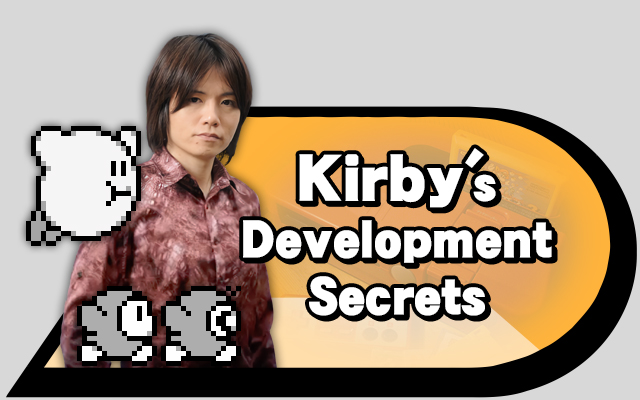
Note: The information and pictures used in this post are from GAME Watch blog.
Note: Do not repost the full translation. Please use the first two paragraphs and link to this translation.When reporting on this translation you must mention that it was translated by Source Gaming, and include a link to this article. For additional information, please read this post. This translation is for fan use only, and may not accurately reflect the opinions of Masahiro Sakurai.
Source Gaming does not run ads on its website. If you enjoy our translations, please consider donating to our Patreon. It helps us afford new things to translate!
EDIT: Images from Sakurai’s Thoughts About the Video Games Column 529, from Famitsu were added into this post.
If you enjoyed this article, I would strongly encourage you to support Sakurai by buying his books.
Sakurai revealed a development story. At the time, the development tool that HAL Laboratory was using was the Twin Famicom, a console that combined the Famicom and the Famicom Disk System. A trackball made specifically for the Twin Famicom was used with the machine, which read and wrote data to a floppy disk and uploaded data to the floppy disks [during development].
EDIT: The development tool, called “Game Maker” was made when HAL worked on Metal Slader Glory.



Essentially, they were using a Famicom to make Famicom games. Sakurai told the crowd, “It’s like using a lunchbox to make lunch”. However, because of that, they were able to create a functional test product before the project plan was even completed.
During development, they had an estimated 512Kbits of data to work with. As an analogy, he said that if a game like Smash 64 was a person, that amount of data would be like a microscopic dot. Many space-saving techniques were utilized to create the game.
For example, Waddle Dee and Waddle Doo are different enemies but share the same torso. This allowed the team to create two enemies with 1.5 “bodies” worth of space. Gordo was made by flipping the upper left quarter of its body to the other quarters.

According to Sakurai, one idea that was part of the original project plan for Kirby’s Dream Land was to have Kirby fly off the screen when he lost a life. This concept, which would later be used in Smash, originated here. However, Sakurai said that he didn’t consciously remember and implement this exact concept in Smash, but that he “honestly completely forgot” about the original idea. 
He also thought, “space permitting, I’d like the bosses to be really big.” For example, the bomb-throwing midboss, Poppy Bros. Sr, has only three frames of animation for his feet movement, and two frames for his head. Many such techniques were employed to save as much space as possible. The series regular, Whispy Woods had 3 moving parts– two eyes and the mouth– but each is actually made from the same, single image, which itself is one image rotated across its horizontal axis. King Dedede only appears in his unique boss room, so there was no need to consider the appearance of other characters, because of this, King Dedede used up the most space of any enemy in the game.
Sakurai told another secret about the original Kirby. The enemies in the game that fall from the edge of the stage, or climb down stairs do not have proper collision detection. Basically, Sakurai wrote each enemy’s individual movement path, from the start to finish, hexadecimal.
Their development tools didn’t even have keyboard support, meaning values had to be input using a trackball and an on-screen keyboard. By modern standards, it’s unthinkable, and nobody would ever do it, but at the time, Sakurai was a 20-year-old rookie, so he just thought that was the way it was done. There were some benefits to this type of workflow, however: it made the data processing load easier, and so they were able to create a game that had a very smooth movement for a Game Boy game.
Sakurai also revealed that the prototype for Kirby Super Star was made with for the Famicom. The prototype was for internal use only, but the animations for Cutter and Yo-Yo were nearly identical to the animations in the final product, and the prototype was a fairly feature-complete demo. Sakurai said that creating by finalizing the ideas behind the game into a solid prototype, it makes working on the rest of the game much easier.

Source Gaming does not run ads on its website. If you enjoy our translations, please consider donating to our Patreon. It helps us afford new things to translate!
Follow us on Twitter for more information, straight from the source!
- Sakurai’s Internal Smash for Wii U/3DS Development Notes - June 23, 2017
- Kirby’s Development Secrets - April 19, 2017
- Sakurai Discusses His Game Design Philosophy In a Podcast [2002] - March 28, 2017









Always love learning more about Kirby.